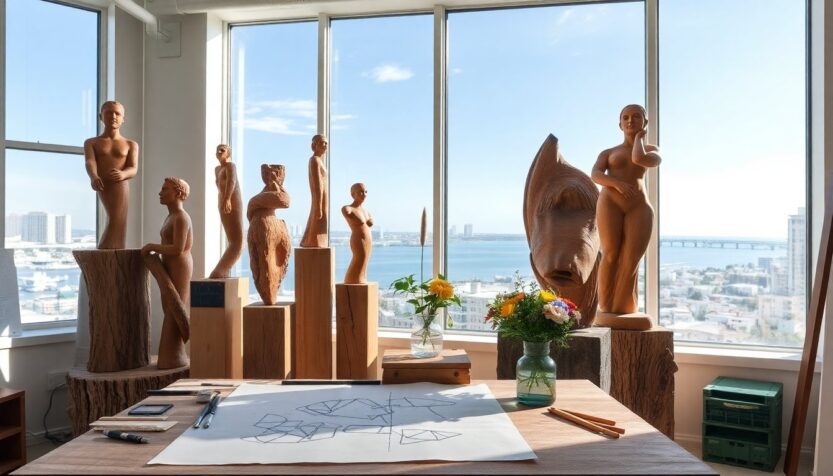The Venice Biennale, often regarded as the Olympics of the art world, is approaching, generating anticipation as the United States prepares to announce its representative artist. The American Arts Conservancy (AAC) has confirmed that Alma Allen will represent the U.S. at the upcoming 2026 edition of this prestigious event. This decision is significant for both Allen and the contemporary American art landscape.
Established in April 2025 in Tampa, Florida, the AAC has quickly become a key player in art diplomacy. In collaboration with the State Department’s Art in Embassies program, the AAC seeks to promote American artists and their works on an international scale. The organization’s mission emphasizes the importance of showcasing the nation’s creative spirit and engaging in global dialogues through art.
About Alma Allen
Alma Allen’s artistic journey is unconventional. Growing up in Utah in a large family, he began creating unique sculptures from wood and stone as a child. His exploration of the artistic process led him to New York City in the early 1990s, where he faced numerous challenges, including financial difficulties and health issues. Undeterred, Allen established a makeshift studio in SoHo, selling his work directly to art enthusiasts and local dealers.
Career milestones and artistic evolution
Throughout his career, Allen has evolved in style and medium, transitioning from small sculptures to large, impactful installations. His work often incorporates materials sourced from nature, such as rock and bronze, which he transforms into pieces that resonate with viewers. Although he has experienced periods of obscurity, his talent has consistently garnered attention from prestigious galleries and collectors.
After participating in notable exhibitions, including the Whitney Biennial in 2014, Allen gained recognition in the art community. His collaborations with various galleries and designers led to commissioned works for high-profile clients and installations in esteemed venues. His selection for the U.S. pavilion at the Venice Biennale underscores his significant contributions to contemporary art.
The Venice Biennale and its significance
The Venice Biennale has long served as a vital platform for artists to showcase their work on an international stage. The event attracts art lovers, critics, and collectors worldwide, offering artists a unique opportunity for visibility and networking. Representing the United States at this event is a considerable honor for Allen, placing his work within a broader narrative of American cultural expression.
With the AAC’s support, Allen’s presentation is expected to feature not only large-scale sculptures but also bespoke installations created specifically for the pavilion. The exhibition will explore themes that resonate with both American identity and global artistic dialogues, highlighting the intersection of creativity and diplomacy.
Challenges and opportunities
Securing funding for the U.S. pavilion has historically presented challenges, with past exhibitions costing millions. The AAC is actively seeking support from private donors and philanthropic organizations to ensure a successful showcase. Financial backing from the State Department, which traditionally allocates funds for such initiatives, will be critical in bringing Allen’s vision to life.
As the opening of the Venice Biennale approaches, Allen is focused on creating a compelling exhibition that reflects his artistic ethos. Sources close to the artist indicate that his commitment to his craft, combined with the AAC’s strategic guidance, positions him well for success. The exhibition represents not only a personal milestone for Allen but also an opportunity to elevate American art on a global stage.
Alma Allen’s representation at the Venice Biennale signifies a pivotal moment in his career and the American arts scene. As he prepares to unveil his work, the art community watches closely, eager to see how his unique vision will resonate with audiences worldwide. This collaboration between Allen and the AAC promises to celebrate the richness of American artistry while fostering international connections through the universal language of art.





